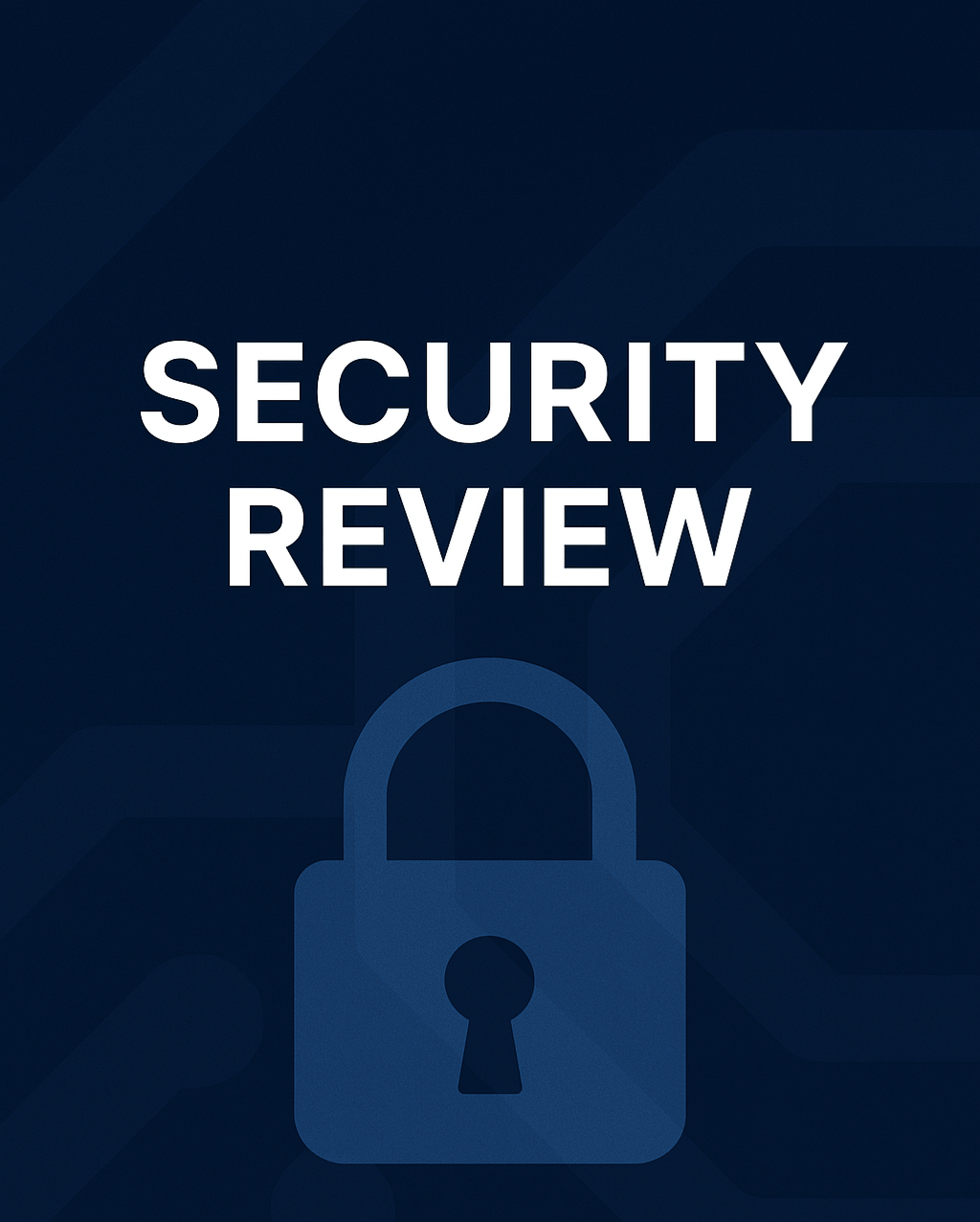Security Operations Center (SOC)
A Security Operations Center (SOC) is one of the core services of any robust cybersecurity framework, playing a pivotal role in safeguarding an organization’s digital assets. The core function of a SOC is continuous monitoring of network traffic, which allows for real-time analysis of any security incidents. This constant vigilance is essential for identifying potential threats and vulnerabilities before they can be exploited.
One of the primary responsibilities of a SOC is the real-time analysis of security incidents. Utilizing advanced tools and technologies, the SOC team can detect anomalies and suspicious activities that may indicate a security breach. Immediate response to these potential threats is crucial to mitigate the impact and prevent further damage. This proactive approach is vital in the ever-evolving landscape of cybersecurity threats.
Having a dedicated team of cybersecurity experts within a SOC is indispensable. These professionals are equipped with specialized knowledge and skills to handle complex security challenges. They leverage sophisticated tools and technologies to perform thorough investigations, analyze threat patterns, and develop effective mitigation strategies. The presence of such a skilled team ensures that the organization can respond swiftly and effectively to any cyber threat.
Organizations often face a dilemma when deciding between outsourcing SOC services and maintaining an in-house team. Outsourcing SOC services can provide access to a broader range of expertise and advanced technologies at a reduced cost. However, an in-house SOC offers the advantage of better alignment with the organization’s specific needs and greater control over security operations. The decision ultimately depends on the organization’s resources, risk tolerance, and strategic priorities.
A well-functioning SOC can significantly reduce the risk of data breaches and other cyber incidents. By providing continuous monitoring, real-time analysis, and immediate response to security threats, a SOC serves as the first line of defense against cyberattacks. This essential service not only enhances the organization’s security posture but also instills confidence among stakeholders that their data and resources are well-protected.
Network Security
Network security encompasses a range of strategies and technologies designed to protect a business’s network infrastructure from cyber threats. One of the foundational elements in this domain is the implementation of firewalls, which serve as a barrier between a trusted internal network and untrusted external networks. Firewalls analyze incoming and outgoing traffic based on predetermined security rules, effectively blocking unauthorized access while permitting legitimate communication.
Another crucial aspect of network security is the deployment of Intrusion Detection and Prevention Systems (IDPS). These systems are vital in identifying and responding to potential threats in real-time. By monitoring network traffic for malicious activity, IDPS can detect unusual patterns that may indicate a cyber attack and take immediate action to prevent damage.
Secure network architecture is the backbone of robust network security. This involves designing and implementing network structures that minimize vulnerabilities. Regular network audits are essential to identify and rectify weaknesses in the infrastructure. These audits should assess the effectiveness of existing security measures and recommend improvements to enhance overall security posture.
Encryption plays a significant role in protecting data in transit. By converting information into a secure format, encryption ensures that even if data is intercepted during transmission, it remains unreadable to unauthorized individuals. This is particularly critical for sensitive data, such as financial information and personal details.
Best practices for network security also include network segmentation, which involves dividing the network into smaller, isolated segments. This limits the potential impact of a breach by containing it within a specific segment, preventing it from spreading across the entire network. Access controls are equally important, as they determine who can access specific network resources, based on predefined policies.
For businesses with remote workforces, implementing Virtual Private Networks (VPNs) is essential. VPNs provide secure remote access by encrypting the connection between the remote user and the company’s network. This ensures that data remains protected from interception, even when accessed over public networks.
In summary, comprehensive network security measures are indispensable for preventing unauthorized access and data breaches. By employing a combination of firewalls, IDPS, secure network architecture, regular audits, encryption, network segmentation, access controls, and VPNs, businesses can significantly enhance their network security posture.
Cloud Security
In today’s digital landscape, cloud security has become a paramount concern for businesses leveraging cloud computing. The shared responsibility model underscores the delineation of security duties between cloud service providers (CSPs) and their customers. While CSPs are responsible for securing the cloud infrastructure, it is incumbent upon the customers to secure their data, manage access, and configure cloud services correctly.
One of the critical components of cloud security is Identity and Access Management (IAM). IAM frameworks help ensure that only authorized users have access to specific resources, thereby mitigating the risk of unauthorized access. Robust IAM protocols are essential for maintaining the integrity and confidentiality of data stored in the cloud. Additionally, employing multi-factor authentication (MFA) can significantly enhance security by adding an extra layer of protection against potential breaches.
Data encryption is another vital aspect of cloud security. Encrypting data both at rest and in transit ensures that even if data is intercepted or accessed by unauthorized parties, it remains unreadable and secure. This practice is crucial for protecting sensitive information and complying with various regulatory requirements.
Regular security assessments and audits are indispensable for maintaining a secure cloud environment. These evaluations help identify vulnerabilities and weaknesses within the cloud infrastructure, allowing organizations to address potential issues proactively. Security reviews should encompass a thorough examination of configurations, access controls, and compliance with security policies.
Misconfigurations are a common cause of security breaches in cloud environments. Ensuring that cloud services are configured correctly can prevent vulnerabilities that might be exploited by malicious actors. To aid in this, Cloud Security Posture Management (CSPM) tools play a crucial role. These tools continuously monitor cloud assets, identify misconfigurations, and provide recommendations for remediation, thereby enhancing the overall security posture.
In conclusion, effective cloud security requires a comprehensive approach that includes robust IAM practices, data encryption, regular security assessments, and proper configuration. Employing CSPM tools can further bolster an organization’s ability to maintain a secure and resilient cloud environment.
Email Security
In today’s digital age, email has become an indispensable tool for business communication. However, this essential medium is also a prime target for cybercriminals aiming to compromise sensitive information. Implementing robust email security measures is crucial to protecting your business from phishing, malware, and other email-based threats.
One of the foundational steps in securing email communications is the use of spam filters. These filters help to block unwanted and potentially harmful emails from reaching employees’ inboxes. By identifying and isolating suspicious messages, spam filters reduce the risk of phishing attempts and malware infections.
Email encryption is another critical measure that ensures the confidentiality and integrity of email content. Encryption scrambles the email’s message content, making it unreadable to unauthorized parties. This is particularly important for emails containing sensitive information, such as financial data or personal details, as it prevents interception and unauthorized access.
Multi-factor authentication (MFA) adds an extra layer of security by requiring users to provide two or more verification factors to access their email accounts. This significantly reduces the risk of unauthorized access, even if a password is compromised. MFA typically involves a combination of something the user knows (password), something the user has (a mobile device), and something the user is (biometric verification).
Employee training is also a crucial component of email security. Educating employees on how to recognize and respond to phishing attempts can prevent many cyber incidents. Regular training sessions and simulated phishing exercises can help employees stay vigilant and better equipped to handle suspicious emails.
Secure Email Gateways (SEGs) and Advanced Threat Protection (ATP) solutions play a vital role in detecting and blocking malicious emails. SEGs act as a barrier between the internet and the email server, filtering out harmful emails before they reach the intended recipient. ATP solutions provide advanced detection capabilities to identify and neutralize sophisticated threats, such as zero-day exploits and targeted attacks.
By implementing these comprehensive email security measures, businesses can protect sensitive information, maintain the integrity of their communications, and significantly reduce the risk of cyber threats. Ensuring robust email security is not just a technical necessity but a fundamental aspect of overall cybersecurity strategy.
Penetration Testing
Penetration testing, commonly referred to as pen testing, is a crucial cybersecurity service aimed at identifying and addressing security vulnerabilities within an organization. By simulating cyberattacks, ethical hackers, also known as penetration testers, assess the robustness of systems, applications, and network infrastructure against potential breach attempts. This proactive approach enables organizations to uncover weaknesses before malicious actors can exploit them.
There are several types of penetration testing, each serving a specific purpose. External penetration testing focuses on assessing the security of an organization’s external-facing assets, such as websites and web applications, from an outside perspective. Internal penetration testing, on the other hand, evaluates the security posture from within the organization’s network, simulating potential threats from insiders or compromised internal devices. Web application testing specifically targets an organization’s web applications to identify vulnerabilities such as SQL injection, cross-site scripting (XSS), and other common web-based threats.
Regular penetration testing is paramount for staying ahead of evolving cyber threats. As attackers continuously develop new techniques, businesses must ensure their defenses are up to date. The process of penetration testing typically involves several critical steps. Initially, the planning phase sets the scope and objectives of the test. During the reconnaissance phase, penetration testers gather information about the target systems to identify potential entry points. The exploitation phase involves actively attempting to breach the system using the identified vulnerabilities. Finally, the reporting phase compiles the findings into a comprehensive report that provides detailed insights and recommendations for remediation.
Utilizing the findings from penetration testing is essential for strengthening an organization’s overall security posture. By addressing identified vulnerabilities and implementing recommended security measures, businesses can significantly reduce the risk of successful cyberattacks. Penetration testing serves as a vital component of a robust cybersecurity strategy, ensuring that organizations can defend against both current and future threats.
Information Security Compliance
Adhering to industry-specific regulations and standards is crucial for ensuring information security compliance. Businesses must navigate a complex landscape of frameworks such as the General Data Protection Regulation (GDPR), Health Insurance Portability and Accountability Act (HIPAA), Payment Card Industry Data Security Standard (PCI-DSS), and ISO/IEC 27001. Each of these frameworks has distinct requirements aimed at protecting sensitive data and maintaining robust security postures.
For instance, GDPR mandates that organizations safeguard personal data and uphold the privacy rights of individuals within the European Union. Non-compliance can result in hefty fines and legal penalties. Similarly, HIPAA sets the standard for protecting sensitive patient data in the healthcare sector. Compliance with these regulations not only mitigates legal risks but also enhances customer trust, reflecting a business’s commitment to protecting data.
PCI-DSS is another pivotal framework focusing on securing credit card transactions and protecting cardholder data. Compliance with PCI-DSS involves implementing strong access control measures, maintaining a secure network, and regularly monitoring and testing networks. On the other hand, ISO/IEC 27001 offers a systematic approach to managing sensitive company information through an information security management system (ISMS). Certification in ISO/IEC 27001 demonstrates a commitment to continuous improvement in security practices.
Compliance audits play a vital role in this process. These audits assess whether an organization adheres to the established criteria and identify areas for improvement. Implementing comprehensive policies and procedures is essential to ensure sustained compliance. These policies should cover aspects such as data protection, incident response, and access control.
Achieving compliance brings significant benefits. It reduces the risk of legal penalties, enhances customer trust, and improves overall security. By integrating compliance into the broader cybersecurity strategy, businesses can create a resilient security posture that not only meets regulatory requirements but also safeguards their reputation and operational integrity.
Vulnerability Remediation
Vulnerability remediation is a critical component of cybersecurity that involves identifying, prioritizing, and addressing security vulnerabilities within an organization’s IT environment. Regular vulnerability assessments are essential for detecting potential weaknesses that could be exploited by malicious actors. These assessments often utilize automated scanning tools that systematically analyze systems, applications, and networks to uncover security flaws.
One of the best practices in vulnerability remediation is effective patch management. Timely application of security patches and updates to software and hardware is fundamental in mitigating risks. Patch management involves identifying relevant patches, testing them in a controlled environment, and deploying them across the organization’s infrastructure. This process ensures that vulnerabilities are addressed promptly, thereby reducing the window of opportunity for attackers.
Another crucial aspect of vulnerability remediation is the establishment of a robust vulnerability management program. This program should encompass continuous monitoring of IT assets, regular vulnerability scans, and comprehensive reporting mechanisms. By maintaining an up-to-date inventory of assets and their associated vulnerabilities, organizations can prioritize remediation efforts based on the severity and potential impact of each vulnerability.
Proactive vulnerability remediation efforts are vital in preventing exploitation and enhancing overall security. It’s not enough to merely identify vulnerabilities; organizations must also take decisive actions to mitigate them. This involves not only applying patches but also implementing compensating controls when patches are not immediately available. Additionally, security teams should stay informed about emerging threats and evolving attack vectors to adapt their remediation strategies accordingly.
In conclusion, vulnerability remediation is an ongoing process that requires a vigilant approach to identifying, prioritizing, and addressing security weaknesses. By leveraging automated tools, adhering to best practices in patch management, and establishing a comprehensive vulnerability management program, organizations can significantly reduce their risk of cyberattacks and strengthen their overall security posture.
Dark Web Monitoring
The dark web, a part of the internet that is not indexed by traditional search engines and requires specific software to access, presents unique risks to businesses. This hidden segment of the internet is often a marketplace for illegal activities, including the trade of stolen credentials, intellectual property, and other sensitive information. For organizations, the dark web’s anonymity and encrypted environment make it a significant threat vector that requires constant vigilance.
Dark web monitoring is essential for identifying and mitigating potential threats that could compromise an organization’s security posture. By leveraging specialized tools and techniques, businesses can proactively search for their data on dark web forums and marketplaces. These tools can detect compromised credentials, financial information, and proprietary data that may have been stolen and put up for sale. When such information is discovered early, businesses can take swift action to prevent further damage, such as changing passwords, notifying affected parties, and strengthening security protocols.
Timely detection and response are critical in minimizing the impact of data breaches. A security operations center (SOC) can play a crucial role in this process, providing continuous surveillance and immediate response to threats uncovered through dark web monitoring. By integrating dark web intelligence with existing cybersecurity measures, such as cloud security and email security, businesses can create a robust defense strategy that addresses multiple threat vectors.
Furthermore, incorporating dark web monitoring into regular security reviews ensures that organizations remain aware of emerging threats and vulnerabilities. This proactive approach not only helps in safeguarding sensitive information but also enhances the overall resilience of the business against cyber attacks. Thus, dark web monitoring is an indispensable component of a comprehensive threat intelligence strategy, complementing other cybersecurity services to provide a holistic defense mechanism.




